Honeymooning In Madagascar
Never before seen species, kitesurfing at the end of the earth, desperately searching for romance and finding food poisoning in its place.
When you marry an Italian, it sort of removes the prospect of honeymooning in Italy. When you get married in Greece, you have to go elsewhere. And because we are always up for an adventure, Gabri and I thought: why not go directly from our debuacherous wedding in Mykonos to Madagascar?! You know, just your ordinary honeymoon destination.
Madagascar isn’t the easiest adventure to plan as its among the only places left on earth relatively untouched by tourism. Or at least that was the case when we were there. The island country involves lots of time in the car as there are no highways and just one road weaves its way across the length of the land. This wasn’t a terrible reality as the ride is always scenic with terrain that changes by the hour. There are no laws in place in terms of construction and the country is spotted with little villages and a few bigger cities that can’t quite call themselves modern.
The people of Madagascar are lovely and it seemed to me that they are happy living simple lives in what many would consider complete poverty. With a big Indonesian influence, Madagascar isn't entirely Africa. They speak a combination of French and Malagasy with English encounters few and far between. Most walk barefoot and have an incredible ability to balance large quantities on their heads. They dress in what seem to be American hand me downs and they use Zebu, a cow-like animal with a neck hump of sorts, to transport goods. They travel mostly by foot or bicycle or pousse pousse (rickshaws) and taxi brousse (think: 50 people packed into a little can with all of their worldly possessions on top). They celebrate the death of the elderly and mourn the loss of the young. Men, unallowed to cry (because some backwards ideals seem to cross cultures), must drown their sorrow in rum, among the island's larger productions along with vanilla.
Having slept an average of three hours a night over the course of our weeklong Mykonos wedding, we embarked on a rather long journey to the fourth largest island in the world. We flew to the country’s capital, Antananarivo. My honest initial impression was that it was comprised of a cluster of slums. Having spent a night in the capital later in our trip though, I discovered that beyond the dirt and disaster, there lies what once must have been a grand and beautiful city with a royal palace and Baroque influence.
Our first stop was Andasibe-Montadia National Park where we stayed at Vakona Forrest Lodge, home to a reserve where you can find carnivorous cats, crocodiles, chameleons and things of the sort. Gluttons for punishment, we immediately embarked on a night tour of Mitsingjo where we saw strange varieties of creepy crawlers. Next, we went to Perrinet to visit Lemur Island. We ventured out on canoes as it was the only way to see famous Ringtail Lemur. The full list of Limur species you can encounter on the island were indri, brown, bamboo, moss, ringtail, howli, golden seafaka (aka seafucker, my favorite obviously).
Our next destination was beautiful Salary Bay. My recommendation for anyone looking to follow our footsteps is to allow ample time to drive back to Antanarivo (Tana) airport because it is, for lack of a more accurate word, a clusterf*ck. We sat in some bizarre traffic pattern as our driver and the local police stood idly by and Gabri—looking entirely out of place as an Italian giraffe—began directing traffic. I was nearly concussed by the potholes on the road, our car’s engine caught fire and we had to hitchhike, all while trying to catch a flight. Gabri had to manually lift an out-of-order (likely for centuries) exit gate before finally making it to the airport where we had to bribe security to let us send our bags through.
Madagascar Air wasn't bad at all—decent plane, clean, relatively on time and seemingly good pilot. If I sound surprised, it’s because I was after the airport adventure. In any case, we made it.
The Salary Bay Hotel was reminiscent of Puglia’s Trulli houses with dome-like structures scattered about the property. It’s located at what feels like the end of the Earth but is rustically romantic and beautiful. I’d say it was a highlight worth the 3+ hour drive from Tulear, most of which was via a "road" that will bounce your bladder around until you wonder if it’s shifted to occupy a different space in your body. Michelle, the jovial owner who let Gabri watch the Italy/Germany fútbol game in her room at 1am, was welcoming and accommodating, clearly. The food was excellent and a welcome relief from the heavy French(ish) fare you find in the country. Our meals consisted of freshly caught delights from the nearby sea, enveloping us from both sides. We were lucky and had most of the place to ourselves. We scheduled fairly cheap massages with an impressively strong local woman and went diving and snorkeling at a nearby dive center. The visibility wasn’t amazing while we were there but that was on account of the wind and perhaps our being clarity snobs given the dazzling water where we spend most of our time. Our dome had four walls but the roof reached out across the porch leaving it open to the sound of the crashing waves and chirping birds which became a natural sound machine.
From Salary Bay Hotel, you can go with Fred, who runs the dive center, to Mikea Lodge. You can also go by car but I’d recommend the boat as the turquoise water is spectacular. It was about a 30 minute ride but only because the boat goes slowly for shallow waters. Upon arrival, we discovered what felt like a beach at the end of the world. The sand flows seamlessly into water, a shade I’d never seen rivaled. And as we walked along this magnificent natural swimming pool, local children wild and beautifully full of joy, excitedly followed alongside us. They were hoping for gifts but we didn’t have anything material to give so instead, they were gifted some instruction from dance captain Gabri. They seemed content to follow along, although all were far better dancers than discombobulated Gabri. (It’s not his fault. I’ve discovered, during my decade-long Italian immersion, that Italian men aren’t on par with Latino men when it comes to their moves. I for some reason imagined they would be but at least in my experience, this is one arena in which Italians do not do it better. Mi dispiace amici è vero. Gabri gives it his goofy all though and I love him for it.)
Mikea lodge offers one of the best locations on the planet for kite surfing. Lessons are available, although potentially challenging for non-French speakers, and conditions are ideal. Gabri is a fairly seasoned kitesurfer. I gave it a go once upon a time but have since decided it’s not the sport for me (I’m more of a land animal despite lots of time spent on the water). At Mikea, I was more than content though to watch the beautiful scene unfold before me. The restaurant at the lodge was decent and the property was spotted with Baobab trees, an odd and fascinating variety found only in Madagascar.
We rented quads and went for a tour with the lodge's young owner who spoke the language of the Mikea people. The Mikea people are the oldest inhabitants of Madagascar. They are Forrest dwellers living off of roots, making fire with their hands and catching water from the Baobabs. Their bodies evolved to become tiny, yet healthy little vessels for optimal forrest life.
We rode through the Spiny Forrest, trying to make fire with a sweet Mikea man who led us on foot through gigantic Baobabs. We then continued to a village where the children and eventually their mud-painted parents, chased us up the dunes, jumping on our quads, unafraid of injury. The view of the sunset from the white sand dunes surrounded by these happy little wild sprites was gorgeous. We spent a while taking and showing them pictures of themselves before night fell and we headed back with Fred to Salary Bay. It was an adventure as we had to get a running start onto the boat, crashing angrily against the waves. We were completely soaked and cold but the night sky was filled with stars and so clear that we were able to see the Milky Way. So I stargazed in awe through the shivering. With zero pollution and utter darkness, the stars seemed to reach straight down into the sea. We’d heard reports that the whales had arrived but despite hours-long efforts, we couldn’t find any. Still, the stars were enough of a satisfying spectacle.
Next up was Isalo National Park. We arranged a transfer through Salary Bay to Tulear (3 hours drive) where we met our next driver, Marco. Tulear to Isalo is about a four hour drive. We did it in less time but it felt like an eternity as my body suddenly decided to reject something I ate moments into the ride.
There is a reoccurring theme in my life and it’s that of food poisoning marking every momentous occasion. Marriage proposal? Boom. Full bowel rebellion. Pregnant with first baby? Natal Noro Virus strikes. So it was silly of me to think that my honeymoon would’t somehow involve my delicate stomach and a dash of embarrassment.
I spent approximately two hours suffering in silence since Marco and I weren’t on that familiar of terms. But just as darkness set in on the third hour, so did one of my darkest hours. Panicked, I yelled for Marco to pull over and went galloping into the bush, akin to what I imagine the Hunchback of Notre Dame would look like if running a marathon while delivering a baby. Remembering that about 70% of the estimated 250,000 species found on Madagascar exist nowhere else on the globe, Gabri took off after me offering help with his phone light shining brightly in my direction. “Vattene via” (go away) I unpolitely screamed as I let nature take its course, alone in the Madagascarian bush. My sense of relief overshadowed any sense of fear and I made my way back to Marco, a new woman, pretending nothing had happened and ready for our arrival to Rock Lodge.
Rock Lodge was modern and beautiful with expansive views, large rooms with jacuzzis, fast internet in the lobby and a decent restaurant. After my battle in the bush, a bit of modern day luxury was what the doctor ordered. But, I didn’t get to enjoy it before Gabri made his entrance yelling exactly this in an Italian accent that had somehow morphed into Borat: “Can anyone halp my wife? She’s sheeting everywhere!” (If you haven’t yet gathered, life with Gabri requires a sense of humor and a high tolerance for humiliation).
After a handful of activated charcoal pills and some restless sleep, both in bed and on the bathroom floor, we ventured out for a hike with an Italian and English-speaking Malagasy guide. He taught us about the terrain and the Bara people who’ve traditionally inhabited the area. We learned about their customs involving tombs and the gifting of Zebu to prospective brides. It was a beautiful hike, only somewhat tainted by the looming fear that I would have to jet off into some unknown territory to deal with my body’s rebellion.
Following our time in Isalo, we returned to RN7, the country’s only main road, to head back to Antanarivo. The drive, while long, allowed us to see the diverse landscape and pass through towns revealing Malagasy life. We stopped in Ambositra to buy some souvenirs and continued on to Antsaribe. We were told to stay at Couleur Café by a local friend but it was full so we stayed at Royal Palace which was relatively clean but not great. Against our principles, we ate pizza and visited the Sabotsky market which felt like a Moroccan souk. We were the only tourists and got lucky in that we were there on a Saturday, the market’s biggest day while it’s operational on a smaller scale during the rest of the week. After some time in the market, we went to a sort of house where each room contained a family member who had a different expertise (miniatures, tablecloths, Zebu horn crafts). It was here we found most of the souvenirs we took home.
From Antsirabe, we drove the rest of the way back to Antanarivo. This time, we stayed at now closed Hotel Lokanga which had an amazing terrace with beautiful views. It was charming with lots of Baroque-influenced character but I’d be lying if I said it didn’t feel a little dusty. That’s a word I’d use to describe Madagascar. Dusty. Fascinating but dusty. As an alternative, you could opt for Maison Gallieni or Relais de Pleateaux, both said to offer the modern comforts one might be searching for in Madagascar’s capital city.
Gabri, perhaps in a chivalrous effort to become my company in misery, had eaten some roadside bananas and lychees on our drive. They were closed by their peel and so it was a logical decision. Except not. What followed was a scuregge symphony. (One of the Italian words I’m most amused by is scuregge, meaning fart). This was highly entertaining in that there we were, on our honeymoon, with me on the toilet (solely as a precautionary measure) and Gabri standing tall in an old school footed bath behind a would-be sexy see-through screen, scuregge-ing on an infinite loop.
We met an Italian friend who’d long been living in Madagascar, producing and exporting spices. He took us to Sakamanga, a cozy red restaurant filled with ex-pats and good food. He gave me more charcoal pills, provided us a tour of his spice operations and sent us off on our long journey home.
My Madagascar takeaway? I’m delighted to have visited this unique and fascinating country. It was an adventure that presented us with an engrossing juxtaposition between our fast-paced modern lives and a slower, simpler pace what felt like worlds away. And today, when it’s nearly impossible to find authentic encounters no matter where you go, it was a one of a kind experience where even the uncomfortable moments were most welcome. I don’t know that I would recommend it for an occasion calling for romance like that of a honeymoon. Although, it somehow seems fitting for me and Gabri—an exhausting honeymoon adventure of dusty disarray with ample amounts of flatulence and an altogether on brand, unconventional story for the books.


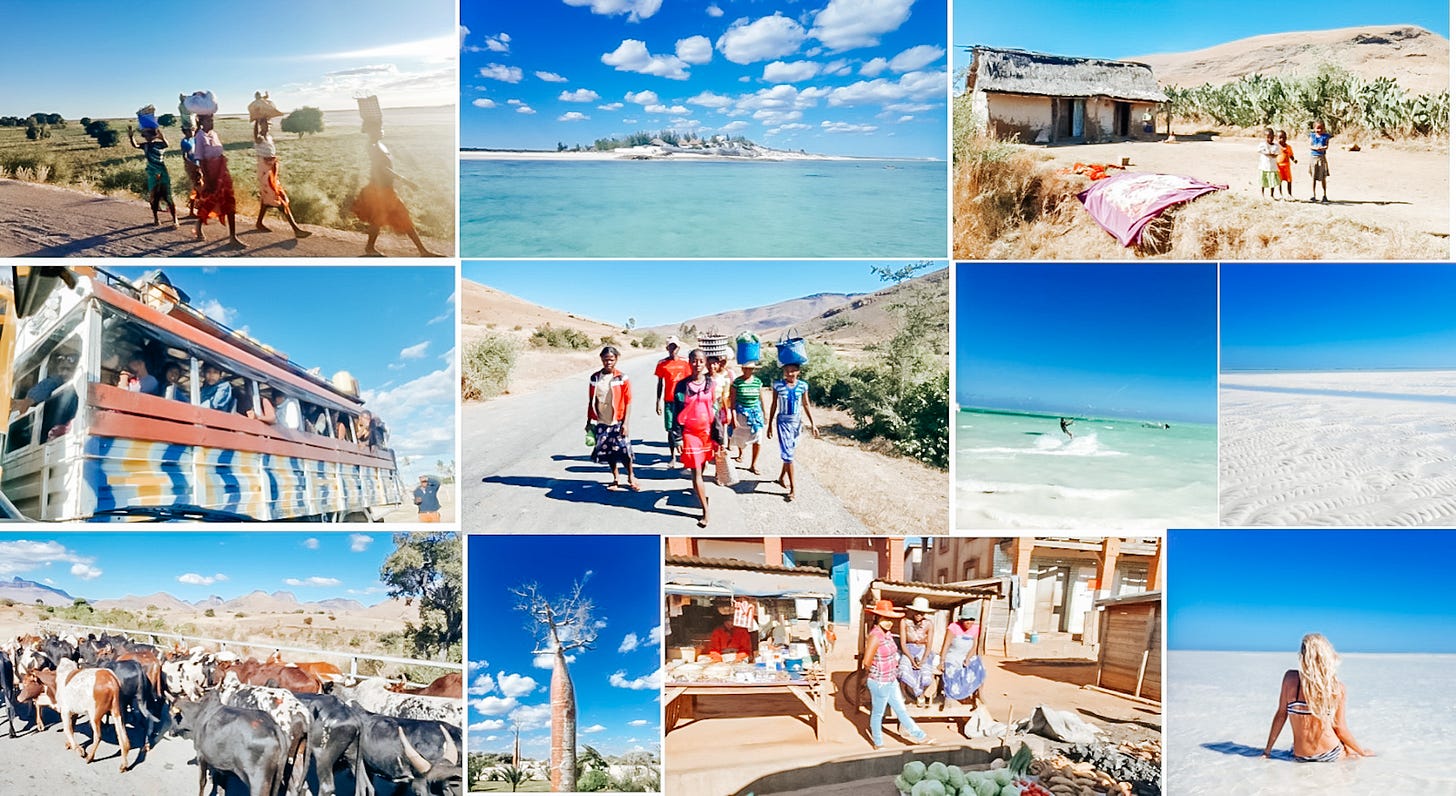
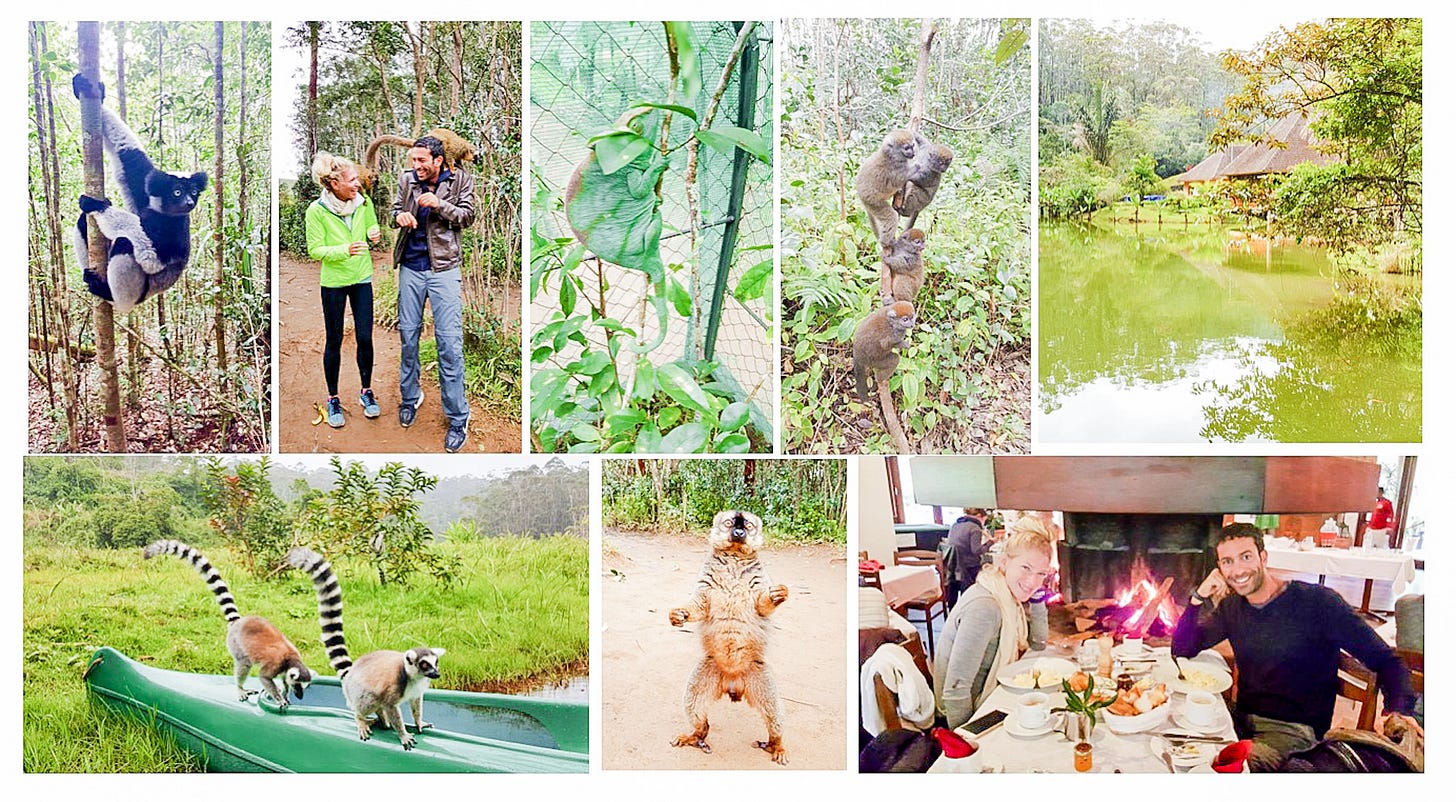

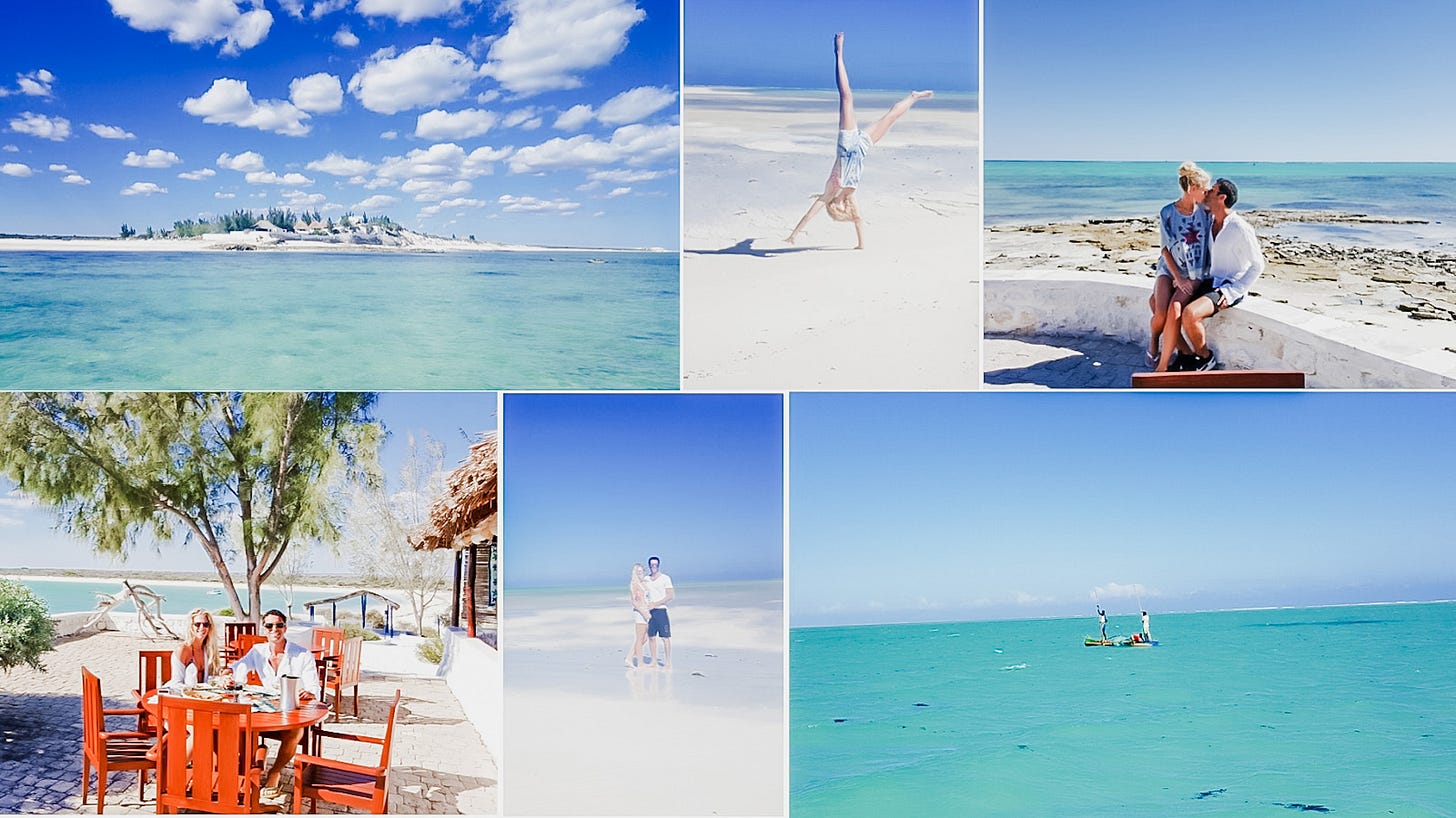
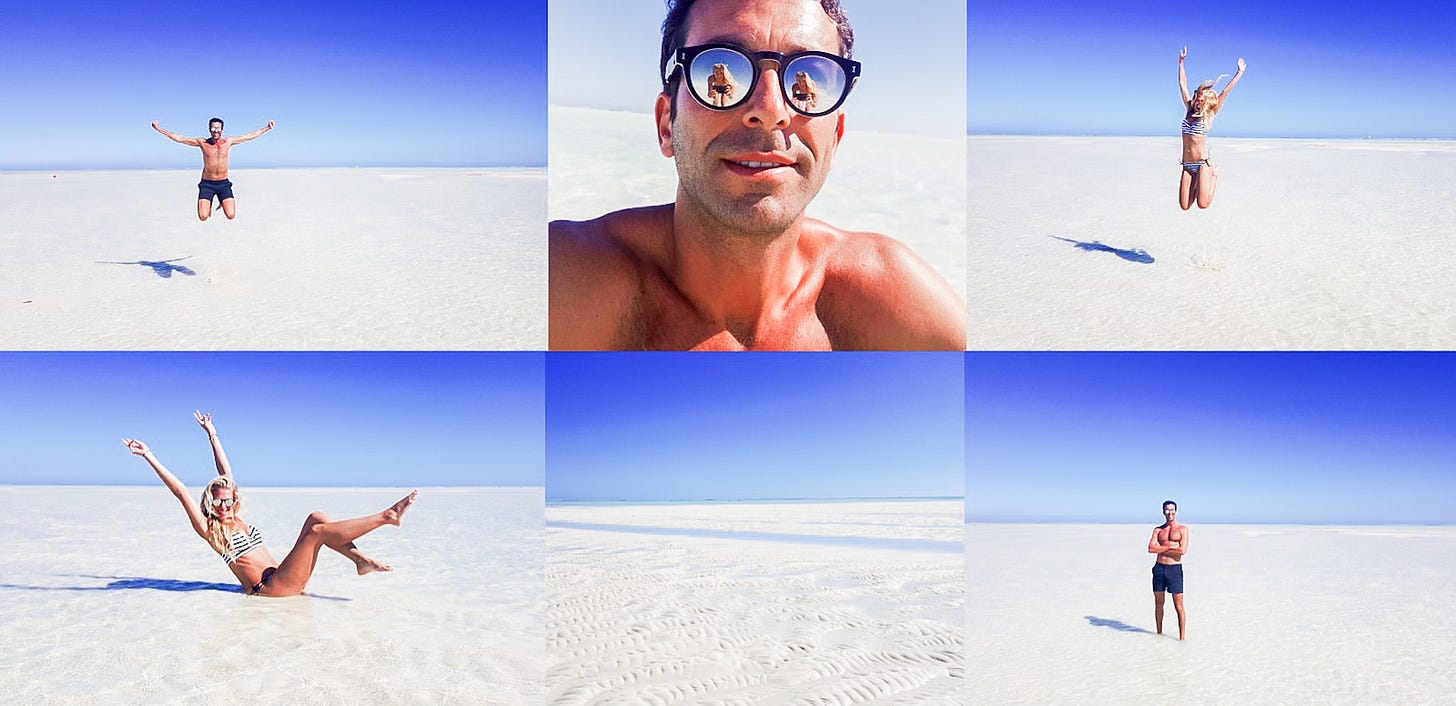
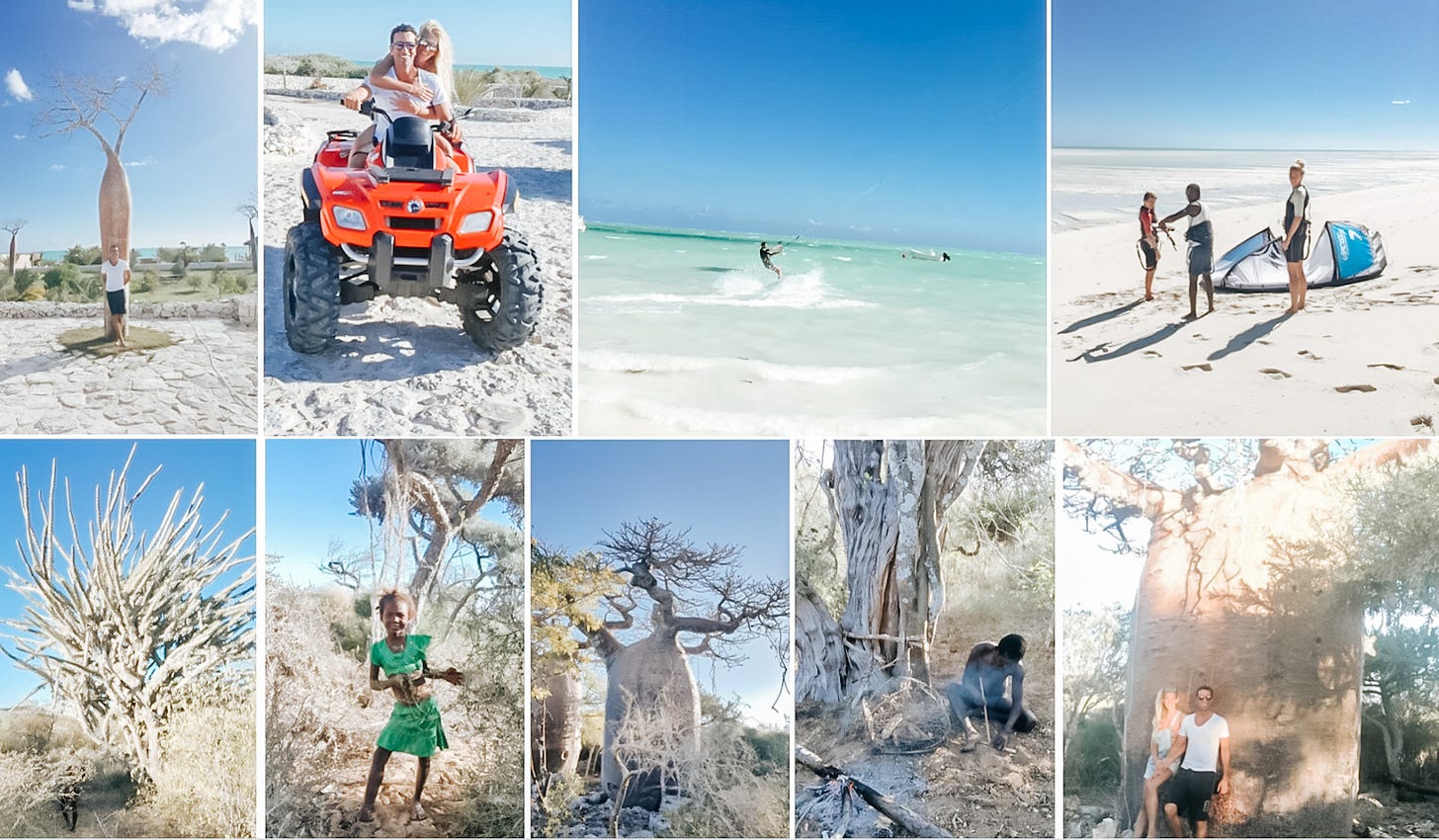
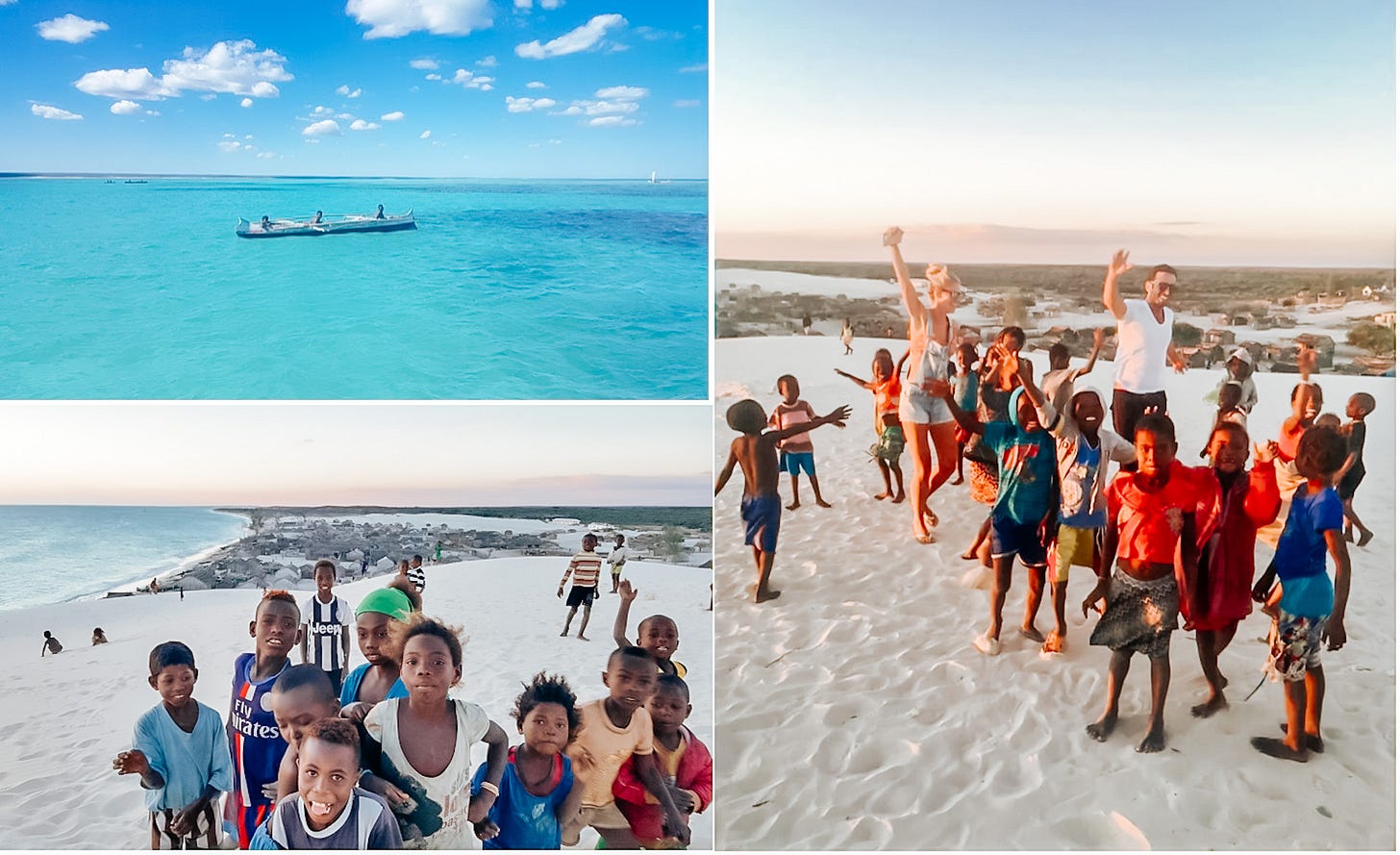
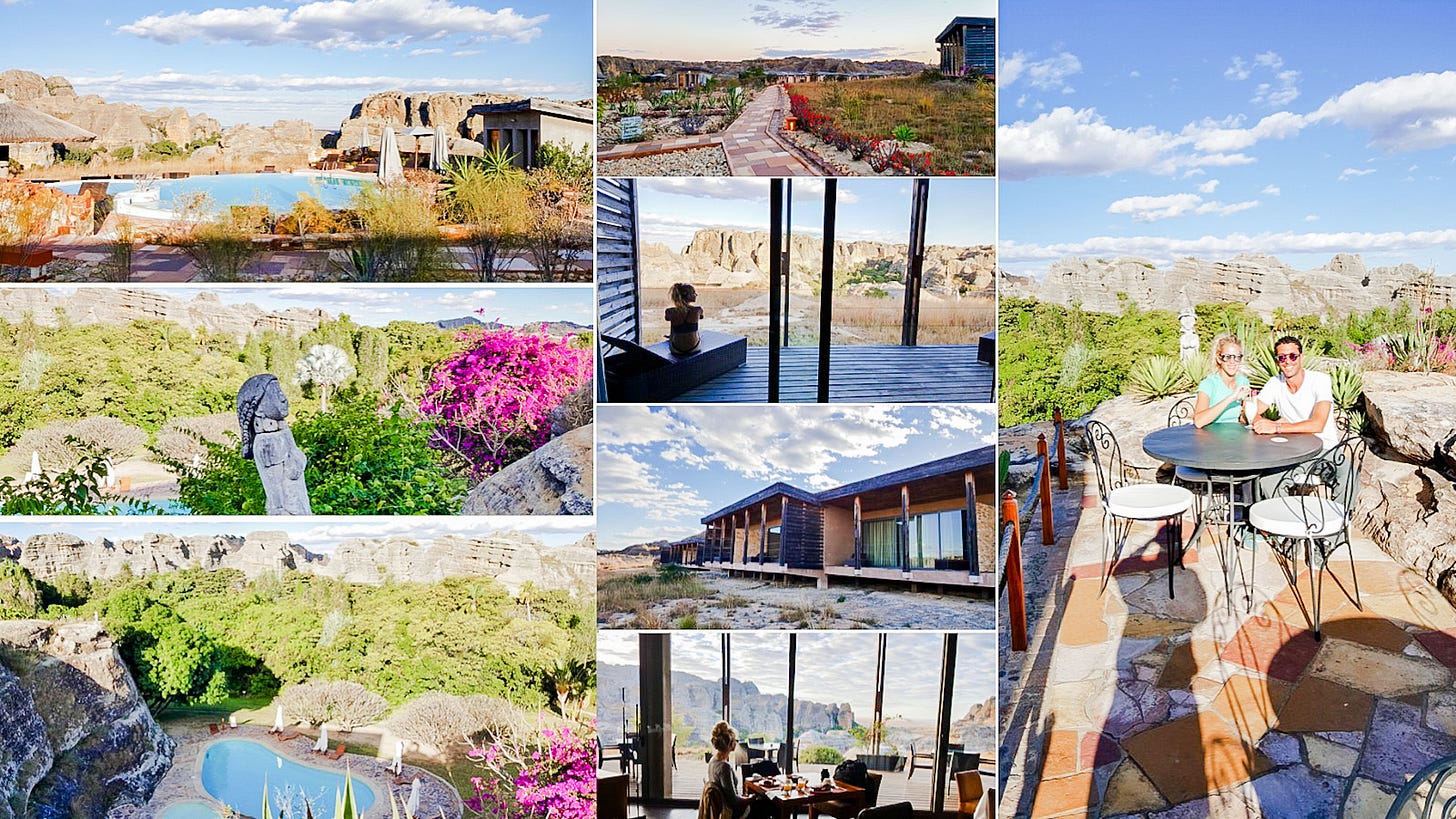

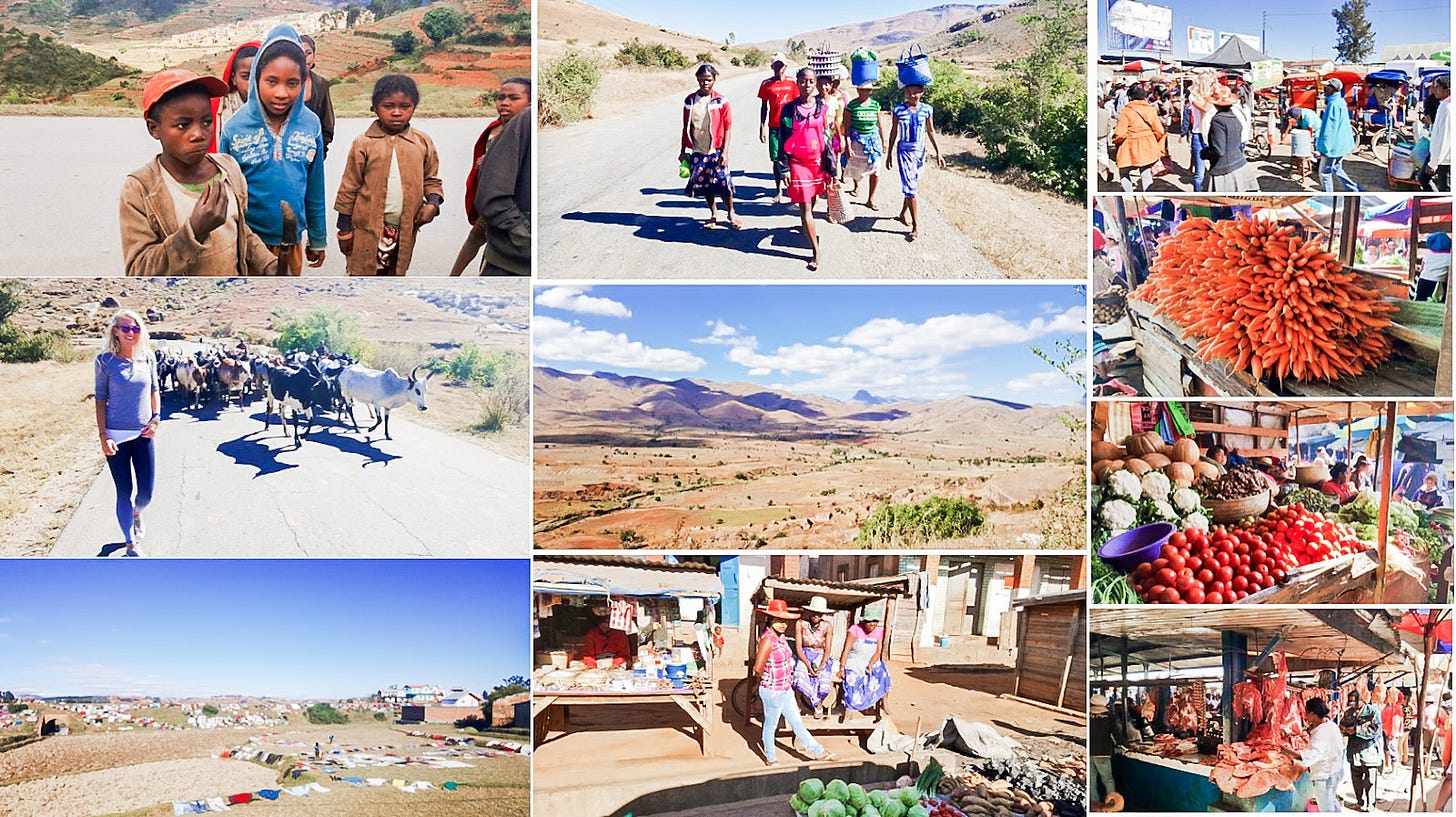
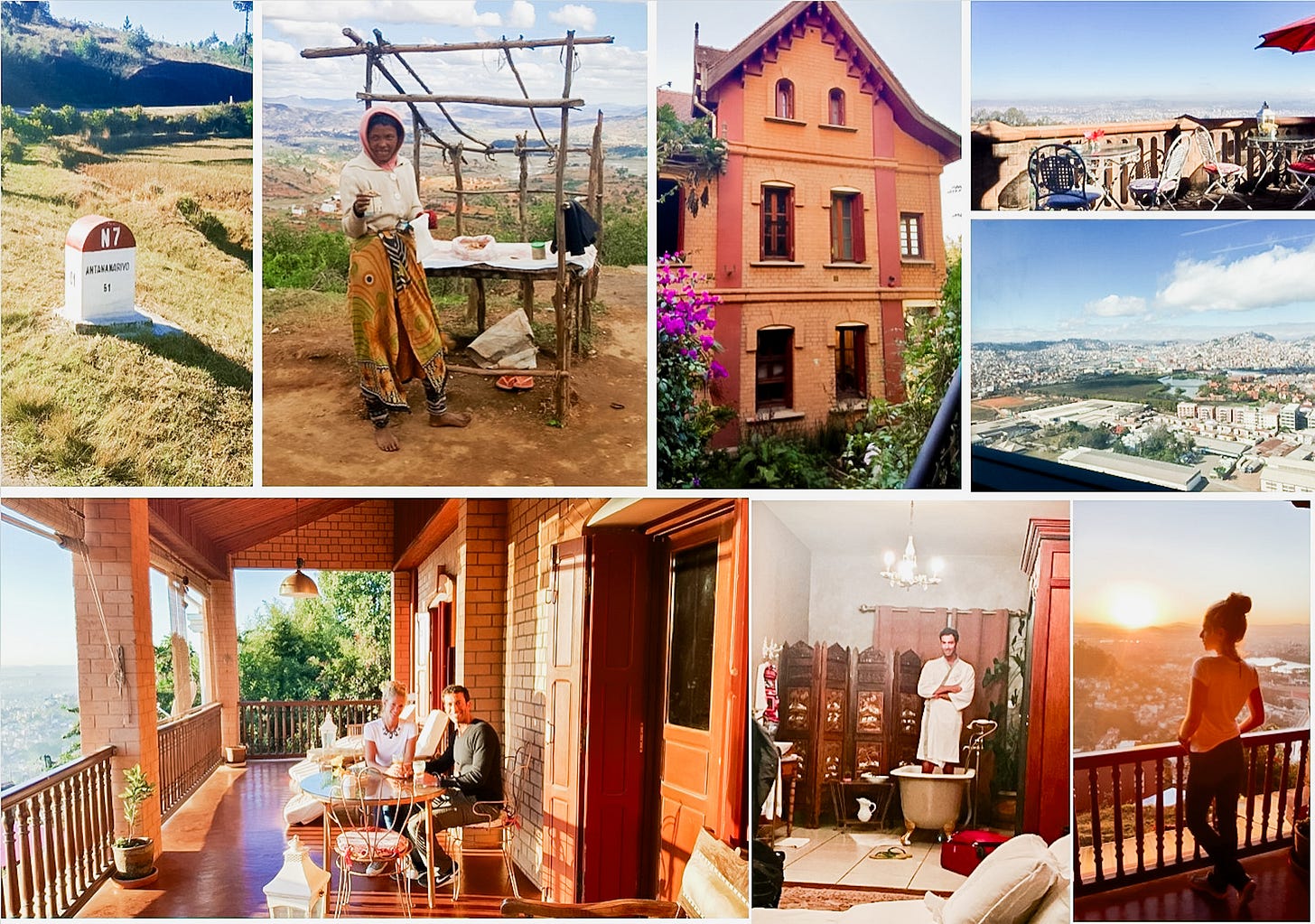
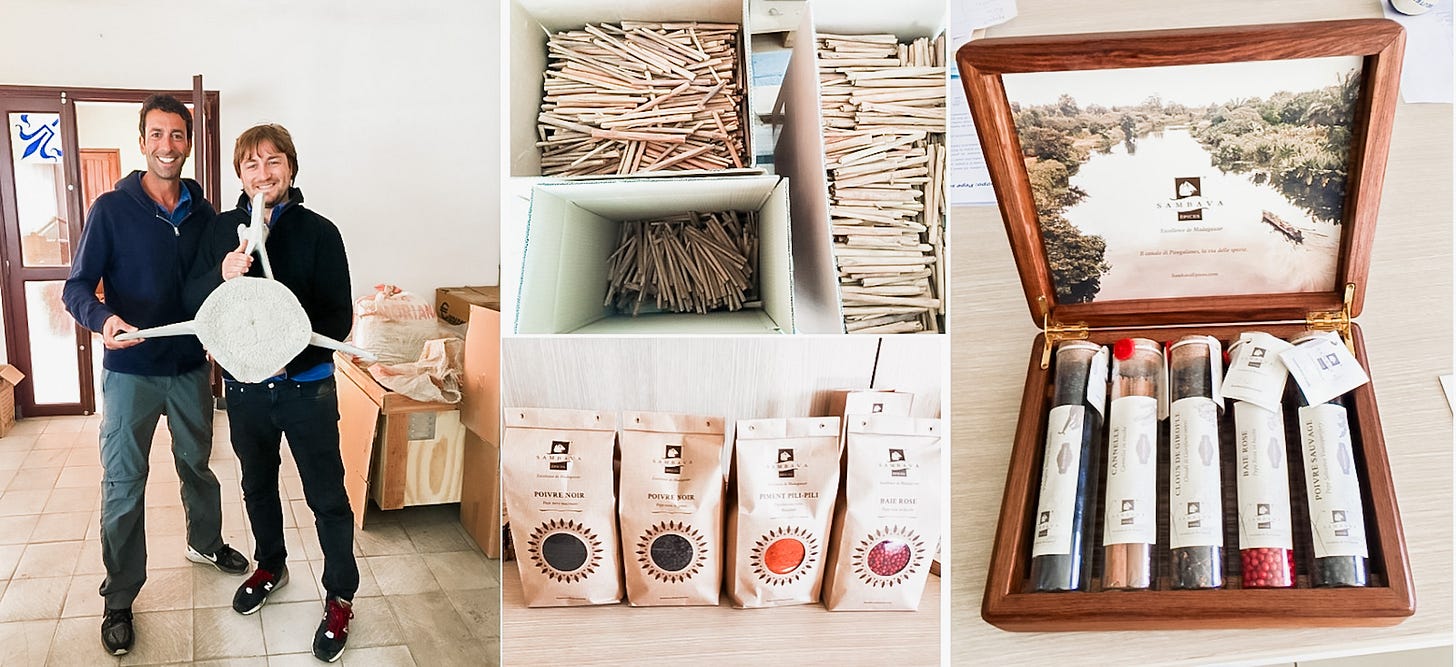
Loving these! We had a dog named Sake ( all white) from Tulear…a Cotón de Tulear